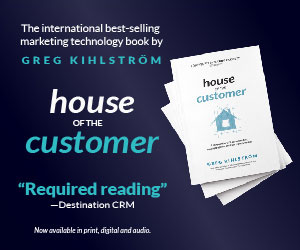This article was based on the interview with Heidi Bullock, CMO at Tealium by Greg Kihlström, Artificial Intelligence and Marketing keynote speaker for The Agile Brand with Greg Kihlström podcast. Listen to the original episode here:
Understanding and utilizing customer data effectively is crucial for marketers to create personalized and engaging experiences. One of the key components of this strategy is leveraging first-party data. First-party data refers to the information collected directly from customers by the organization itself. This data is valuable, accurate, and consented, making it a powerful tool for marketers to enhance their campaigns and drive better results.
What is First-Party Data?
First-party data is the information that organizations collect directly from their customers through various touchpoints such as websites, mobile apps, point of sale systems, and customer interactions. This data is unique to each brand and provides valuable insights into customer behavior, preferences, and interactions with the brand.
Unlike third-party data, which is purchased from external sources and may be less accurate and complete, first-party data is reliable and up-to-date. It allows marketers to create personalized experiences, improve targeting, and build stronger relationships with customers.
The Role of First-Party Data in Marketing
First-party data plays a crucial role in modern marketing strategies for several reasons:
- Personalization: By leveraging first-party data, marketers can create personalized experiences for customers based on their preferences, behaviors, and interactions with the brand. This level of personalization can lead to higher engagement, increased loyalty, and improved customer satisfaction.
- Compliance and Consent: With the increasing focus on data privacy regulations such as GDPR and CCPA, using first-party data ensures compliance with data protection laws. Since customers provide this data directly, marketers can ensure that they have consent to use it for marketing purposes.
- Data Accuracy and Completeness: First-party data is more accurate and complete compared to third-party data. By collecting data directly from customers, marketers can rely on high-quality information to inform their campaigns and decision-making processes.
- Real-Time Insights: First-party data allows marketers to access real-time insights into customer behavior and preferences. This enables them to make timely adjustments to their campaigns, personalize messaging, and optimize customer experiences on the fly.
Implementing a First-Party Data Strategy
To effectively leverage first-party data, marketers need to implement a comprehensive data strategy that focuses on collecting, analyzing, and utilizing customer information. Here are some key steps to consider when developing a first-party data strategy:
- Data Collection: Start by collecting consented and relevant data from various touchpoints where customers interact with your brand. This includes websites, mobile apps, social media, and offline channels.
- Data Integration: Integrate data from different sources to create a unified view of the customer. This allows you to gain a comprehensive understanding of customer behavior and preferences across channels.
- Data Analysis: Use data analytics tools to analyze customer data and identify patterns, trends, and insights that can inform your marketing strategies. This includes segmentation, predictive analytics, and propensity modeling.
- Real-Time Activation: Utilize a Customer Data Platform (CDP) to collect, analyze, and activate first-party data in real-time. This enables you to deliver personalized experiences, optimize campaigns, and improve customer engagement.
- Value Exchange: Offer customers value in exchange for their data. Provide personalized recommendations, exclusive offers, or enhanced experiences based on the information they provide. This creates a mutually beneficial relationship between the brand and the customer.
The Future of Marketing with First-Party Data
As the marketing landscape continues to evolve, first-party data will play an increasingly important role in driving successful campaigns and building lasting customer relationships. By focusing on collecting, analyzing, and utilizing first-party data effectively, marketers can create personalized experiences, improve targeting, and enhance customer engagement.
First-party data strategies are essential for marketers looking to stay ahead in a data-driven world. By prioritizing the collection, analysis, and activation of customer data, brands can create personalized experiences, drive better results, and build stronger connections with their audience.
By embracing first-party data and implementing robust data strategies, marketers can unlock the full potential of customer insights and drive success in an increasingly competitive market.











